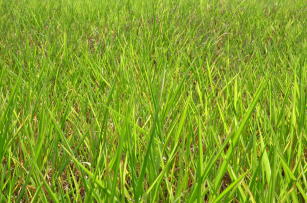Researchers discover new source to obtain acid to manufacture Tamiflu
Researchers discover new source to obtain acid to manufacture Tamiflu
Researchers from Embrapa and Instituto Biológico (São Paulo State Biological Institute) have developed a method to extract the molecule of shikimic acid, a key compound in the synthesis of the antiviral Tamiflu, from a new biological source, a tree that has originated from Japan. The acid is extracted from the leaves of Cryptomeria japonica, a large cypress known as Japanese cedar.
Cryptomeria has proven to be a renewable and reliable source of the acid, as it grows quickly and adapts well to the climate and soil of the south of Brazil, which would allow for wider production of this acid on a commercial scale.
Nowadays shikimic acid is predominantly extracted from the plants Illicium verum, popularly known as Chinese star anise as it grows in northern China, and Illicium anisatum, which is native to Japan. It has been used as a precursor for the synthesis of oseltamivir phosphate, a semi-synthetic drug that works against several variants of the influenza virus, including H1N1 and H5N1, and is considered the most efficient treatment against bird flu.
Because of that, shikimic acid is a valuable chemical product that has attracted worldwide attention due to its pharmaceutical application, to the extent of being considered a “chemical commodity”.
According to Embrapa Environment researcher Antonio Cerdeira, Tamiflu is so important that countries have a strategic reserve of the drug. Therefore, interest in shikimic acid has shown a strong increase in recent years due to the growing demand from the pharmaceutical and cosmetic industry, the researcher explains.
The diverse range of possibilities of biosynthesis from plants and microorganisms significantly contributes to the supply of a variety of chemical structures, which are the fundamental basis for many products of high industrial interest around the world.
For Marcus Matallo, a researcher at Instituto Biológico, the ability to produce valuable products through biological processes by using different microorganisms and plants has proven to be a versatile and promising route to obtain sources of raw materials.
Thus he believes that chemical industries have realized the usefulness of biosystems to effectively mediate chemical conversion for the production of important bioactive compounds.
Research
The experiments were implemented jointly with the Weed Science Laboratory (LCPD) at Instituto Biológico's Experimental Center (CEIB) in Campinas, São Paulo.
Tamiflu
The antiviral drug oseltamivir (oseltamivir phosphate), which is traded under the name Tamiflu, reduces the proliferation of influenza A and B viruses by inhibiting the release of viruses from infected cells, the virus' entry into uninfected cells, and the spread of the virus in the body. Hence the drug reduces the length of the signs and symptoms of the flu, the severity of the disease, and the incidence of complications associated with the flu.
The full study by Marcus Matallo, Sydney de Almeida, Daniel Franco, from Instituto Biológico; and Sonia Queiroz and Antonio Cerdeira, from Embrapa Environment, was published in the book Ciência das Plantas: desafios e potencialidades em pesquisa [Plant Science: research challenges and potentials].
Cristina Tordin (MTb 28.499/SP)
Embrapa Environment
Press inquiries
meio-ambiente.imprensa@embrapa.br
Phone number: +55 19 3311 2608
Translation: Mariana Medeiros (13044/DF)
Superintendency of Communications
Further information on the topic
Citizen Attention Service (SAC)
www.embrapa.br/contact-us/sac/


